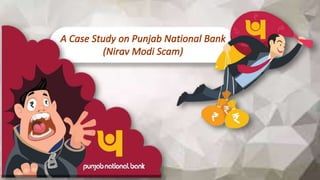Author: Tejashwini Verma, Patna Law College
Abstract: The Nirav Modi scam, involving a colossal $2 billion fraud, is a case of significant financial misconduct and banking fraud. This analysis dissects the scam’s background, legal implications, and judicial responses, offering a comprehensive understanding of the events, legal framework, and consequences.
Introduction: Nirav Modi, an Indian diamantaire, orchestrated one of the largest financial frauds in India, defrauding Punjab National Bank (PNB) of approximately $2 billion. The scam, unveiled in early 2018, involved intricate financial manipulations and high-level collusion, exposing severe regulatory and supervisory lapses. This analysis covers the case’s key components, legal ramifications, and case laws relevant to understanding this financial debacle.
Case Background: Nirav Modi, a prominent jeweler, used his company, Firestar International, to exploit weaknesses in PNB’s internal controls. By leveraging unauthorized letters of undertaking (LoUs) and bypassing the established banking protocols, Modi and his associates were able to siphon off substantial funds from the bank. The scheme persisted for several years before it was uncovered, revealing a complex web of deceit involving high-level bank officials and corporate executives.
How the Scam Unfolded
Fraudulent Letters of Undertaking (LoUs): LoUs are essentially guarantees from a bank to another bank for a short-term loan. In this case, Nirav Modi and his companies were able to secure these guarantees from PNB without proper documentation or authorization.
Collusion: Key PNB employees were involved in the scam. They issued these LoUs without recording them in the bank’s internal systems, allowing Modi and his associates to obtain loans from foreign banks. The scam involved several layers of deception, including falsifying documents and misrepresenting financial transactions.
Scale of the Fraud: The fraud was estimated to be around ₹14,000 crore (approximately $2 billion). The scam went undetected for several years, which allowed it to grow to such a massive scale.
Exposure and Investigation: The scam was exposed when PNB reported the issue to the Indian government and financial regulators. The investigation revealed that the fraud had been ongoing for several years, involving complex financial transactions and manipulation of bank processes.
Aftermath and Impact of the Scam
Legal Actions: Nirav Modi, his family members, and several PNB employees faced legal actions. Modi fled India to avoid arrest, and an international manhunt was launched to apprehend him. He was eventually arrested in the UK and faced extradition proceedings.
Impact on PNB: The scam severely impacted PNB’s reputation and financial stability. It also raised concerns about the effectiveness of banking regulations and internal controls in India.
Regulatory Reforms: In response to the scam, the Indian government and financial regulators took steps to improve banking transparency and prevent similar frauds in the future. This included tighter regulations on bank operations and enhanced scrutiny of financial transactions.
Public and Political Reactions: The scam drew widespread media coverage and public outrage. It became a significant political issue, affecting perceptions of government and regulatory effectiveness.
The scam had a profound impact on PNB:
Financial Losses: The direct financial loss was substantial, amounting to ₹14,000 crore. This had a severe impact on the bank’s balance sheet and liquidity.
Reputation Damage: The scandal damaged PNB’s reputation, leading to a loss of public and investor confidence.
Operational Challenges: The bank faced operational disruptions and had to implement corrective measures to address the fallout from the scam.
On the Financial System
The scam had broader implications for the Indian financial system:
Regulatory Scrutiny: The scam drew attention to the weaknesses in banking regulations and internal controls.
Market Reactions: There were significant market reactions, including fluctuations in bank stock prices and a decline in investor confidence in the Indian banking sector.
Policy Changes: The scam prompted calls for regulatory reforms and tighter oversight of banking operations.
On the Legal and Political Landscape
The scam also had legal and political ramifications:
Legal Proceedings: Nirav Modi, his family members, and PNB employees faced legal action. Modi fled India to evade arrest, leading to an international manhunt and extradition proceedings.
Political Fallout: The scam became a significant political issue, impacting the government’s image and leading to debates over financial governance and accountability.
Regulatory and Legal Responses
Reforms and Measures
In response to the scam, several regulatory and policy measures were introduced:
Enhanced Oversight: There was a push for greater oversight and transparency in banking operations. Regulatory bodies increased scrutiny of financial transactions and internal controls.
Improved Compliance: Banks were required to strengthen compliance measures, including better documentation and authorization processes for financial instruments like LoUs.
Legislative Changes: The Indian government introduced legislative changes to improve the legal framework for handling financial fraud and improving corporate governance.
Ongoing Legal Proceedings
The legal proceedings in the case have been extensive:
Extradition of Nirav Modi: Nirav Modi’s arrest in the UK and the subsequent extradition proceedings were a focal point. The legal battle over his extradition and the charges against him were closely followed.
Trial and Sentencing: The trial of the accused, including PNB employees and Modi’s associates, continued as part of the legal process to ensure accountability and justice.
The Nirav Modi-PNB scam highlighted serious issues within India’s banking sector and led to increased scrutiny and reforms aimed at preventing similar incidents in the future.
Legal Framework: The case falls under several legal purviews including:
Banking Regulation Act, 1949 – Governs the operations of banks and includes provisions for ensuring financial stability and integrity.
Prevention of Money Laundering Act, 2002 (PMLA) – Addresses money laundering offenses and provides for the attachment and confiscation of proceeds of crime.
Indian Penal Code (IPC), 1860 – Specific sections relevant to fraud and criminal conspiracy.
Proof:
Financial Documents: PNB’s internal records, including the forged LoUs, transactions, and correspondence, were instrumental in tracing the fraud. These documents demonstrated the unauthorized guarantees issued and the consequent financial losses.
Testimonies: Statements from PNB employees, including the bank’s former deputy manager, implicated in facilitating the scam, provided crucial evidence. Their admissions highlighted the procedural and supervisory failures.
Investigative Reports: The Enforcement Directorate (ED) and Central Bureau of Investigation (CBI) conducted thorough investigations, resulting in charges against Modi and his associates for money laundering, criminal breach of trust, and conspiracy.
Case Laws:
K.K. Verma v. Union of India – The Supreme Court held that banks must ensure rigorous compliance with internal controls and financial regulations to prevent fraud.
V. B. Deshmukh v. State of Maharashtra – Established the legal precedent for holding individuals accountable for financial frauds involving large sums and the need for stringent penal actions.
M.C. Mehta v. Union of India – Emphasized the responsibility of regulatory bodies to maintain the integrity of financial institutions and prevent corruption.
Legal Proceedings: Nirav Modi was charged under multiple sections of the IPC and PMLA. Following his arrest in the UK, India sought extradition, citing evidence of his involvement in the fraud and the severity of the charges. The case also involves international legal cooperation to address cross-border aspects of financial crime.
Conclusion:
The Nirav Modi scam underscores the critical need for robust banking regulations and oversight mechanisms. The case highlights the vulnerabilities in banking institutions and the importance of stringent enforcement of financial laws. It also illustrates the global dimension of financial fraud and the collaborative efforts required to address such issues.
FAQS:
What was the scale of the Nirav Modi scam?
The scam involved a fraudulent diversion of approximately $2 billion from Punjab National Bank.
What methods did Nirav Modi used to execute the fraud?
Modi used unauthorized letters of undertaking (LoUs) and manipulated banking procedures to siphon funds.
What are the primary legal statutes involved in this case?
The case involves the Banking Regulation Act, Prevention of Money Laundering Act (PMLA), and the Indian Penal Code (IPC).
What are the potential penalties for Nirav Modi if convicted?
If convicted, Modi could face severe penalties including imprisonment, fines, and asset confiscation under PMLA and IPC provisions.
How has the case impacted the banking sector in India?
The case has led to increased scrutiny of banking practices, stronger regulatory frameworks, and reforms aimed at preventing similar frauds in the future.
What is the status of Nirav Modi’s extradition?
As of the latest updates, Nirav Modi’s extradition process is ongoing, with legal proceedings in the UK to determine his return to India for trial.
This case analysis encapsulates the intricate details of the Nirav Modi scam, providing insights into its legal, financial, and regulatory aspects.




